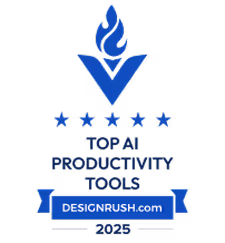Analytics Glossary
Enterprise Analytics

Enterprise analytics refers to the coordinated use of advanced data techniques across an entire organization to uncover insights, guide operations, and improve performance. A Forrester survey found that 69% of analytics decision-makers plan to increase spending on data, data management, and analytics, proof that insight capabilities have become board-level priorities. Meanwhile, PwC’s Pulse Survey reports that nearly half of technology leaders have already embedded AI into their company strategies, heightening the urgency for accessible, reliable data systems. Yet challenges persist, as about one-third of firms admit their customer and operational data isn’t ready for AI, with fragmented sources eroding revenue and slowing analytics adoption.
AI is rapidly emerging as the driving force behind the future of enterprise analytics, transforming how organizations generate, interpret, and act on insights. Accenture’s study shows that organizations with AI-led workflows achieve 2.5 times higher revenue growth than those yet to modernize. Forrester TEI analyses confirm this efficiency dividend, showing modern insight platforms cut time-to-answer and time-to-insight by double-digit percentages within the first year, freeing analysts for higher-value work.
Still, around 40% of enterprises remain constrained by siloed data, stalling cross-functional visibility and informed strategy.
In this blog, we will explore the evolution of enterprise analytics and how it enables organizations to transform raw data into strategic intelligence. We will examine its core components, practical applications across industries, and the challenges enterprises face in scaling analytics effectively. We will also look at how next-generation platforms like Lumi AI are redefining analytics through automation, governance, and self-service capabilities that make insight generation faster, more reliable, and accessible to all.
What is Enterprise Analytics?

Enterprise analytics refers to the coordinated use of advanced data techniques across an entire organization to uncover insights, guide operations, and improve performance. It brings together all business domains like finance, supply chain, marketing, and customer experience under a unified analytical framework that converts enterprise-wide data into measurable intelligence. What distinguishes it is its scale and depth. Instead of working in isolated dashboards, teams interact with governed, AI-powered systems capable of handling massive data volumes, ensuring that every decision is informed by the same trusted source of truth.
A complete enterprise analytics ecosystem rests on four essential layers.
- Data integration consolidates inputs from multiple applications, databases, and third-party systems into a single, synchronized environment.
- Visualization transforms these raw datasets into interactive charts and reports that reveal relationships and performance patterns.
- Predictive modeling uses machine learning and statistical methods to analyze historical and real-time data, uncovering patterns that guide proactive action before issues or opportunities arise.
- Data governance ensures that every stage, from data collection to insight delivery, remains accurate, compliant, and consistently defined, allowing organizations to act confidently on trustworthy information.
Unlike legacy business intelligence systems that primarily describe past performance, new enterprise analytics techniques attempt to relieve some of the pain points of legacy systems and deliver a connected, forward-looking view of the business. It combines historical reporting with diagnostic, predictive, and prescriptive layers that allow users to understand causes, anticipate future shifts, and simulate the impact of decisions. While traditional BI often depends on centralized data teams to produce reports, enterprise analytics enables business users to explore data directly, through AI-driven interfaces, self-service dashboards, and collaborative workflows that reduce the lag between question and insight.
Evolution of Enterprise Analytics
Transition from static dashboards to interactive, AI-powered analytics
Over time, enterprises have shifted from using dashboards that snapshot past metrics toward analytics tools that are dynamic, user-driven, and AI-augmented. Traditional static dashboards require manual updates, fixed visual layout, and typically are aggregated, monthly or quarterly, leaving insights unreachable that might reside at a more granular / row level.
In contrast, modern interactive systems use natural language queries, and often embed predictive or anomaly detection so users can anticipate trends rather than simply review what has occurred. Already, 73% of large enterprises cite “dashboard fatigue” as a major obstacle to data-driven decision making, with over 400 dashboards per organization going largely unused, signaling that static dashboards are being abandoned.
Focus on data democratization and self-service capabilities
One of the major shifts in enterprise analytics has been extending data access broadly across the organization via self-service tools, so that non-technical users can explore, analyze, and act on information without constantly involving IT or analysts.
Analytics platforms now often include intuitive drag-and-drop interfaces, natural language query support, and pre-built semantic layers, lowering barriers for business units to ask their own questions and test hypotheses.
This democratization tends to accelerate decision cycles, reduce bottlenecks around report generation, and shift skilled staff away from repeatable tasks toward higher value work like model building or strategic planning.
Cloud, scalability, and automation as defining traits of modern systems
Modern analytics platforms are built to run on cloud infrastructure so they can dynamically expand and contract resources in response to demand, automate as many operational tasks as possible, and support large-scale workloads without bogging down performance. Cloud deployment allows enterprises to provision storage, compute, and networking elastically, so during peak data ingestion, model training or query loads, more capacity can be brought online instantly, then scaled back afterward to limit cost.
Tasks like data pipeline orchestration, infrastructure provisioning, resource allocation, deployment of models, and even anomaly detection are increasingly handled with little to no manual intervention. A recent survey from CloudZero’s State of CloudOps Report found that 95% of organizations automate at least some CloudOps tasks, though only ~15% report heavy use of automation. This combination of cloud, scalability, and automation allows analytics systems to handle far greater data volume, deliver insights faster, and reduce dependency on constant manual configuration or intervention.
Core Capabilities of Modern Platforms

Secure data connections
Lumi enables direct, governed access to enterprise systems such as ERPs, CRMs, and transactional databases. Through secure authentication, encryption, and configurable data gateways, organizations can connect both cloud and on-premise sources without compromising compliance or firewall integrity. This ensures authorized users can safely query live operational data while maintaining full control over access policies and governance standards. Also, connection controls allow Lumi to access secure enterprise data sources without requiring open firewall ports, maintaining compliance with strict enterprise security and governance standards.
Natural language querying for non-technical users
Natural language querying breaks down the barrier between business users and complex data systems by allowing questions to be asked in plain speech rather than SQL or code. This capability transforms how decisions are made. Sales managers can ask “Which regions saw the biggest quarter-over-quarter growth?” or finance teams can inquire “What’s driving the spike in operating costs?” and receive instant, contextualized answers.
Lumi’s Chat 2.0 exemplifies this accessibility. It interprets conversational queries with high precision, transparently displays how the system processes them, and presents results in intuitive visual or tabular formats. The feature also supports collaborative agent visibility, showing which AI or human actions contributed to an answer, thereby reinforcing trust and interpretability. In effect, Lumi empowers every employee to explore insights confidently and contribute to data-informed decisions in real time.
Real-time performance tracking and collaborative insight-sharing
Real-time analytics allows organizations to monitor key metrics as they unfold, enabling faster reactions to market shifts, operational changes, or customer behaviour. Instead of waiting for static reports, users gain continuous visibility into live KPIs, performance thresholds, and deviations from targets.
Lumi extends this capability through Chat 2.0, which lets teams interact with live data conversationally and view transparent agent workflows that reveal how insights are generated. This ensures that everyone, from analysts to executives, can trace data lineage, verify interpretations, and act on trusted information instantly. Paired with Lumi’s Human Verification layer, teams can collaboratively review, approve, and annotate insights before they’re shared across departments, turning analytics into a synchronized, organization-wide dialogue rather than isolated reporting.
Impact Across Business Functions
Supply chain
Enterprise analytics is transforming supply chain performance by bringing end-to-end visibility, from demand planning to last-mile delivery, under one intelligent system. Predictive analytics enables businesses to anticipate demand shifts, optimize safety stock, and minimize waste, while prescriptive models support proactive risk mitigation across logistics and vendor networks. According to a KPMG study, half of supply chain leaders plan to expand AI and advanced analytics adoption to strengthen forecasting accuracy and agility.
Analytics shortens decision timelines across planning, replenishment, and exception handling, which reduces stockouts, lowers carrying costs, and improves on-shelf availability.
Lumi AI demonstrates these capabilities through its work with Kroger, one of the largest U.S. retailers. Kroger faced challenges analyzing store order versus distribution shipment (OvS) data at scale, a process that once took days of manual effort.
The results were 1.2 million units of unmet demand identified and issue resolution time reduced from days to minutes, driving faster replenishment decisions and sharper operational responsiveness.
Retail & CPG
Enterprise analytics delivers sharper understanding of customer behaviour by merging transactional, digital engagement, and loyalty data. Brands can discover which segments drive the most lifetime value, anticipate churn, personalize offers, and adjust assortment to what customers will actually buy. In fact, a report found that retailers leveraging advanced analytics for customer value prediction achieved a 31% improvement in marketing ROI. Analytics also drives smarter inventory control. It understands demand, reduces excess stock, and increases turnover, minimizing capital tied up in unsold goods while reducing the risk of stockouts.
Lumi AI applies these capabilities through enterprise-level implementations. In its work with Chalhoub Group, Lumi analyzed cross-channel behaviour and transaction data to identify customers with high conversion propensity and nudged them toward in-store engagement, resulting in a $60 million revenue upside opportunity and a $174 possible lift in offline average order value.
In the CPG space, Lumi’s collaboration with Notions Group was able to flag high-risk accounts and improve working capital, highlighting 12% of annual revenue and equating to $6 million in overdue payments. Through these examples, Lumi helps retail and consumer goods firms turn advanced analytics into revenue growth, margin protection, and operational discipline.
Operations
Enterprise analytics improves operational planning by bringing transactional, market, and operational data into a single decision layer. According to an Evanta CFO survey, 52% of finance leaders plan to invest in data and analytics, reflecting a clear shift of budget toward tools that improve forecasting precision and resource planning.
With Sapphire Group, Lumi connected directly to SAP ERP and analyzed vendor and material costs across 20,000 plus SKUs, producing a 38% reduction in procurement cost and collapsing time-to-insight from seven days to thirty seconds. These examples show how analytics translates into tangible cost savings, faster reallocation of working capital, and materially improved forecast confidence.
Challenges in Enterprise Analytics

Data silos
Data silos occur when departments or systems store information independently, preventing cross-functional visibility. Operations, sales, and procurement may each maintain their own data repositories. This isolation leads to duplicated efforts, inconsistent metrics, and slow alignment on strategic decisions. When teams cannot access or trust shared insights, enterprise-wide collaboration suffers, and decision-making becomes reactive instead of proactive. The result is a system where valuable data exists, but it’s trapped, thereby limiting its impact on forecasting, optimization, and performance measurement.
Inconsistent data quality
Enterprises collect vast amounts of data daily, but without consistent standards and validation, this data quickly loses reliability. Errors like missing entries, mismatched formats, and outdated figures create confusion across reports and dashboards. When decision-makers cannot trust their data, strategic planning slows, and analytics teams spend excessive time cleaning instead of analyzing. Inconsistent quality also cascades across business processes, producing flawed forecasts, inaccurate KPIs, and wasted resources.
Lumi AI enhances this process with Metametrics, which instantly profiles every column in a dataset by summarizing nulls, outliers, and distinct values, so teams know the health of their data before analysis begins. Combined with Human Verification, Lumi introduces expert oversight into AI-generated results, ensuring every output meets enterprise standards for accuracy and trustworthiness.
Change management and adoption barriers
Even when data infrastructure is strong, many enterprises struggle with adoption. Traditional analytics tools often require technical expertise to query data, design dashboards, or interpret visualizations. Non-technical users depend on analysts for every report request, which slows down operations and discourages data-driven habits. This reliance creates bottlenecks, where insights are delayed, and the potential of analytics is limited to a few skilled professionals instead of being democratized across the organization.
Overcoming this challenge requires tools that prioritize usability and inclusivity. Platforms that support natural language interaction, transparent workflows, and guided exploration empower every employee to access and understand data directly. Lumi AI’s Chat 2.0 was built with this principle at its core. It allows users to ask questions conversationally, generate insights on demand, and trace the logic behind each result. By making analytics conversational and explainable, Lumi bridges the gap between technical and business teams, ensuring that decision-making becomes faster, broader, and more confident across the enterprise.
Future Outlook

Integration of generative AI into enterprise analytics
Generative AI is redefining how enterprises interact with their data. Instead of relying solely on pre-built dashboards or static queries, generative models can now create new insights, summaries, and visualizations dynamically based on natural language prompts. This evolution allows analytics platforms to move beyond descriptive reporting to contextual storytelling, where the system interprets data patterns and communicates findings in clear, human-like language.
In enterprise settings, this means teams can automatically generate executive reports, scenario forecasts, or what-if analyses without manual scripting. By embedding generative capabilities into analytics workflows, tools like Lumi AI enable users to co-create insights with AI, turning raw data into instant, structured narratives that accelerate both understanding and decision-making.
The rise of decision intelligence and automated insights
Decision intelligence represents the next phase of enterprise analytics, where analytics systems don’t just analyze data but also recommend and simulate actions. It blends machine learning, data science, and business rules to guide organizations toward optimal choices in complex environments. Unlike traditional analytics that focuses on “what happened” or “why it happened,” decision intelligence answers “what should we do next?” Through automation, these platforms continuously learn from outcomes, improving recommendations over time. Lumi AI integrates this by combining AI-driven analysis with contextual awareness.
The shift toward fully self-service, autonomous analytics environments
Enterprises are moving toward analytics ecosystems where business users can independently access, explore, and act on data without waiting for technical mediation. As a result, insights become both continuous and consumable at every level of the organization. Lumi AI exemplifies this transition by combining automation, conversational querying, and governance into a single platform that empowers teams to analyze confidently while maintaining oversight, ensuring analytics becomes an embedded, self-sustaining capability within the enterprise.
Enterprise analytics empowers organizations to make faster, smarter decisions by turning fragmented data into unified, actionable intelligence. Through AI-driven automation and self-service capabilities, it transforms how teams understand, plan, and operate. Lumi AI brings real-time insights, human-verified accuracy, and conversational data exploration.
Explore Lumi’s platform to see how your enterprise can move from analysis to confident, data-backed action. Book a demo today.
Related articles
The New Standard for Enterprise Analytics
Make Better, Faster Decisions.


.avif)
.avif)


